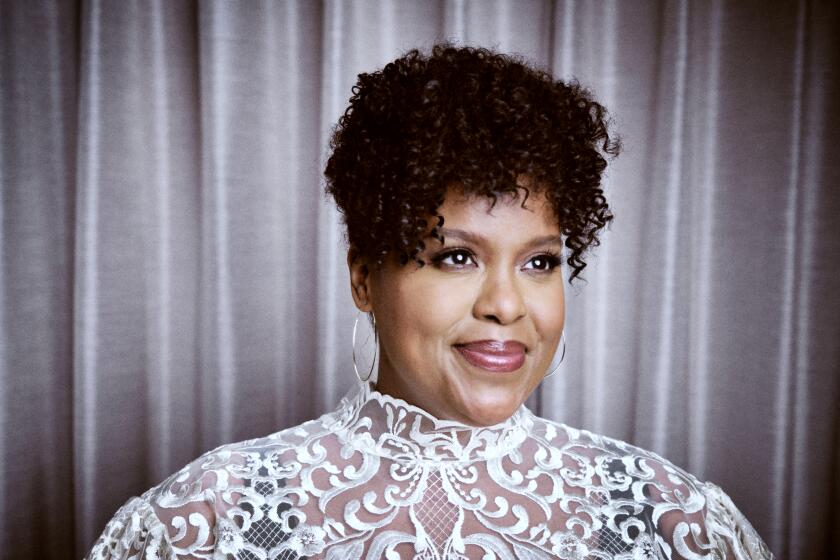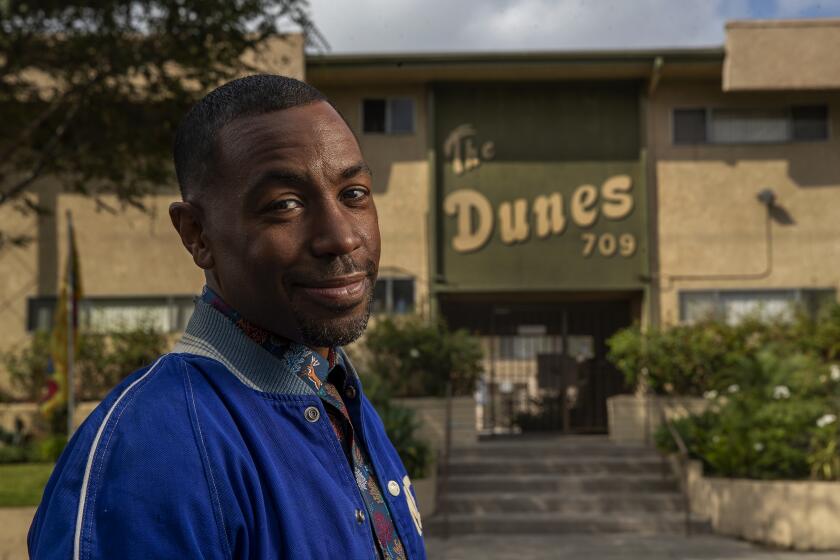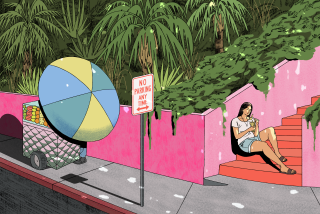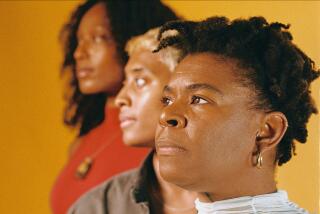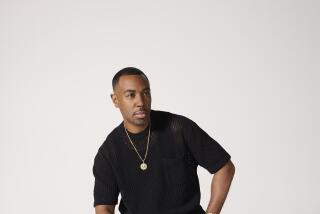How ‘Insecure’ achieved its ‘mission’ to forge a real bond with South L.A.
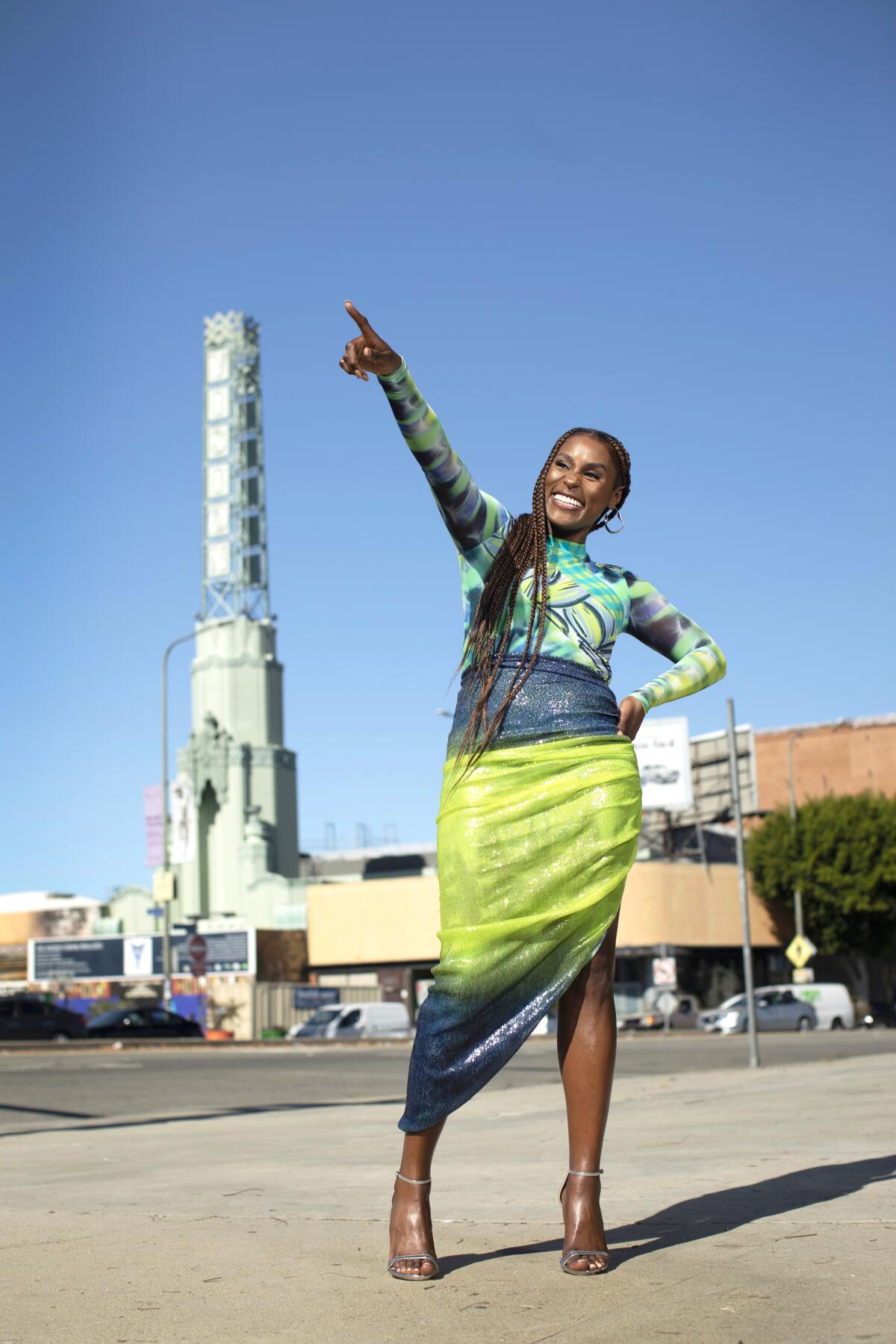
- Share via
Since the 1990s, Hollywood has often depicted South Los Angeles, formerly labeled South-Central, as a hotbed of gang violence, drug dealers and death. For many Black directors this was reality, as police brutality, poverty and the “war on drugs” were and still are cruel realities for Black communities. But South Los Angeles has too long been frozen in time — and the stereotype that this neighborhood south of the 10 is home only to Black suffering still exists, decades after it first became common.
In 2016, actor and writer Issa Rae decided it was time to tell a different kind of South L.A story, one centered on Black community. Through her eyes, the View Park-Windsor Hills neighborhood she grew up in would be seen all over the world as a home where Black families support one another; where Black-owned businesses have served patrons for decades; where local art and culture are booming.
Fast-forward to 2021, and Rae’s vision has become reality. Over the course of five seasons, “Insecure,” the Emmy-nominated HBO comedy she co-created with Larry Wilmore, has made South L.A. events, businesses, landmarks and community central characters in its story of best friends Issa Dee (Rae) and Molly Carter (Yvonne Orji), their college pals Tiffany DuBois (Amanda Seales) and Kelli Prenny (Natasha Rothwell), and Issa’s love interests, Lawrence Walker (Jay Ellis) and Nathan Campbell (Kendrick Sampson) navigating 21st century adulthood. And now, as the series nears its Dec. 26 finale, Rae and her fellow creatives have begun to reflect on the ways “Insecure” has redefined Hollywood’s version of South L.A to showcase Black and brown communities for a global TV audience.
The multi-hyphenate calls her directorial debut for the HBO series ‘a call to arms for authenticity.’ But getting there took a lot of growth.
“For us, there’s so much credibility and authenticity about shooting where you actually are. There’s nothing that makes me feel happier than when I see people who are from L.A. identify the streets and the locations,” Rae said.
“It’s a richer experience if you’re watching the show as a native because you understand. Like in the ‘Lowkey Happy’ episode, it cracked me up that people from here could identify how far Issa walked [back home] after having sex with Lawrence. ... They were like, ‘I know the d— must have been great,’ and that’s just getting an extra piece of authenticity from that.”
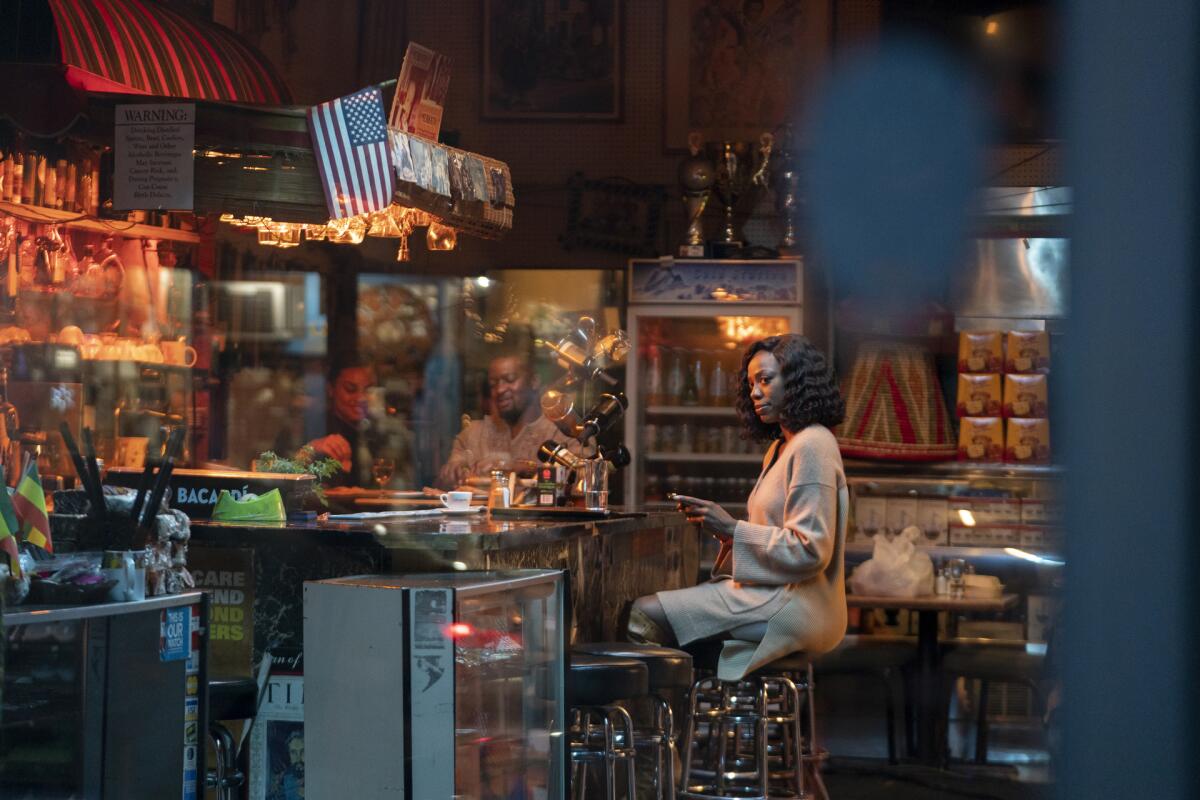
For showrunner Prentice Penny, who’s also from the View Park-Windsor Hills neighborhood, it was vital for “Insecure” to be filmed in South L.A., as it’s always been a tight-knit community for him.
“All my family on both sides … live within, like, a two-mile radius of each other” in South L.A. he said. “I was always in that environment and have so many memories of just being there and my friends who lived there — walking to friend’s houses, riding bikes, sneaking off to 7-Eleven and kissing my first girlfriend down by Hungry Harold’s, at Woody’s Bar-B-Que. All these life-shaping moments just happening in the neighborhood were so specific. Memories that were funny, memories that were sad, that were awkward, all happening around there. So when Issa and I set these locations, we set them for specific reasons. We’re not picking neighborhoods and spots arbitrarily; it needs to make sense while we’re there.”
With regular locations like Hilltop Coffee + Kitchen, Merkato Ethiopian Restaurant and Market, Post & Beam, Jamz Creamery and more, “Insecure” quickly became a place for people to see well-known Black and local businesses in South L.A rather than the typical, touristy staples of L.A.-set films and TV shows — which are located in rich, predominantly white neighborhoods like Beverly Hills.
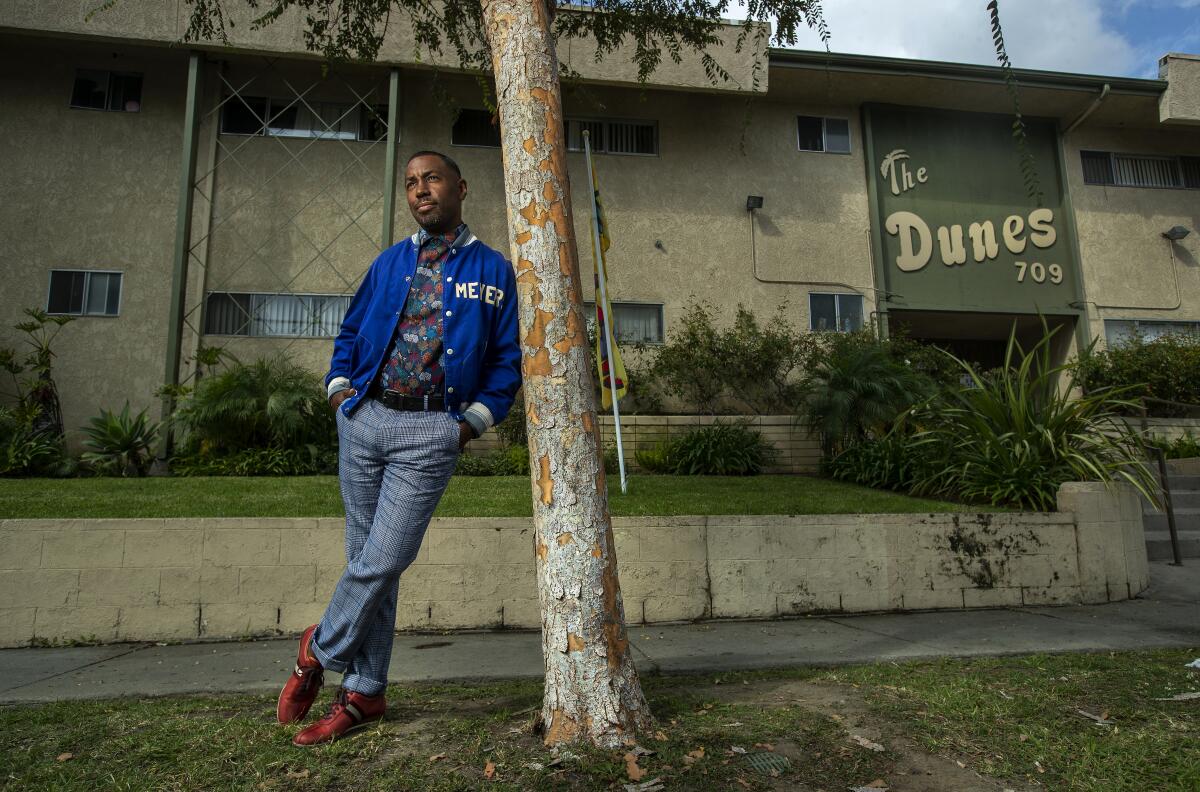
People from around the world now visit L.A. with more than Rodeo Drive on their to-do list, making pilgrimages to the We Got Y’all building, where Issa worked for years at a nonprofit after-school program, the Dunes, where Issa lived, and other “Insecure” hot spots, all because they were able to see it through the eyes of people whose own L.A. focus is not the entertainment industry default.
“Hollywood doesn’t exactly let Black people run free very often,” said Amy Aniobi, a writer and director on the series.
For her, “Insecure” is still the gold standard when it comes to representing the truth of South L.A. “Nobody is doing it. No show is really showing South L.A. in all its beauty and normalcy. There are shows that are starting to do it now. Obviously, [now] you have ‘Twenties’ and ‘All American’ and other shows that are set in L.A, but when ‘Insecure’ came out, if you saw Compton, if you saw South L.A, if you saw even Crenshaw, you’re seeing places where there’s [dramatizes voice] ‘gang violence,’ ‘the police are necessary,’ ‘Black people in strife’ — and we’re here to celebrate Black joy.”
Showrunner Prentice Penny explains the HBO series’ highly specific geography, and dishes about what’s next for Issa and Molly.
Amid the themes of relationships and coming of age as young Black millennials, the series has always come back to the central theme of community building. Whether it’s Issa staging the block party in Inglewood, then forming her new venture the Blocc, or the real-life Rae promoting Black-owned businesses and engaging in community projects like Destination Crenshaw, the series and its co-creator alike are driven by love for the city.
Rae has also held events in the neighborhood, like the “Insecure” Season 2 premiere at Inglewood’s Miracle Theatre in 2017 and the Baldwin Hills Crenshaw Plaza’s Black History Month celebration at Macy’s in 2018. More recently, she offered fans free watch party screenings in Los Angeles and New York to kick off Season 5 and hosted the “Insecure” Fest Block Party in Inglewood. It’s a level of engagement — and uplift — uncommon even to L.A.-set shows, and that’s reflected in the response from those who know the neighborhood best.
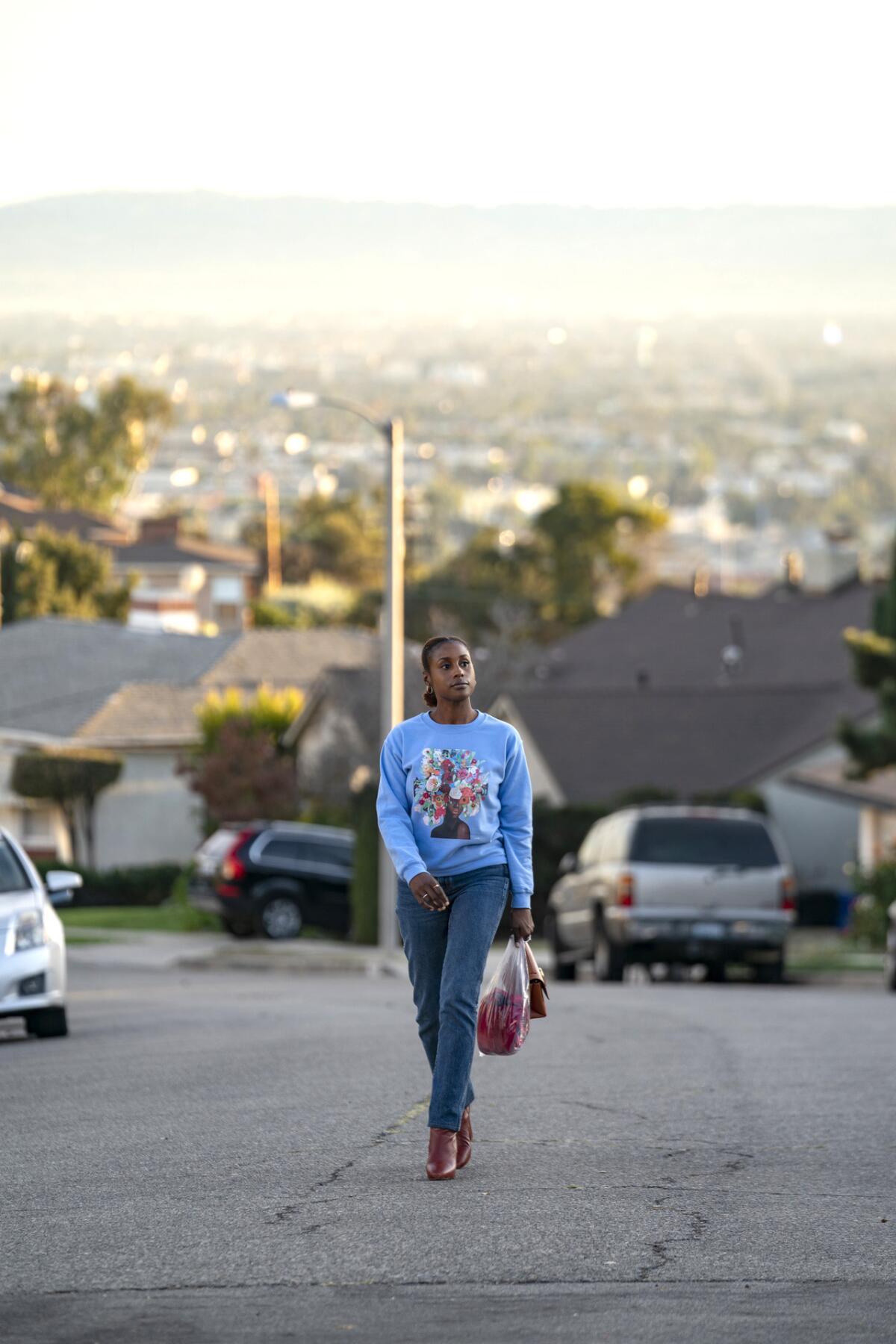
“It means so much to the community living in L.A. and being from L.A. and living in Inglewood,” said series writer Syreeta Singleton. “That’s where I live now. The community is involved. They know when ‘Insecure’ is shooting, and I have friends who I’ve grown up with who are like, ‘Oh, I have a business, can my food truck be a part of the episode?’ It’s great to be able to give those opportunities.”
Singleton is grateful that the team behind “Insecure” not only lasted five seasons, but also that it was able to do it on its own terms. “We got to show that shows like this have an audience, that they have support, that Black people love it,” she said. “Black people will support it, and so will other people.”
In addition to combating South L.A.’s association with a cliché sob story, “Insecure” has replaced it with something else: a positive vision of the neighborhood that viewers will hold on to long after the series’ end.

“It’s beautiful to watch people want to go on an ‘Insecure’ tour and want to go to places to eat or want to go to those landmark places we put in the show because that matters to them,” Penny said. “It’s not just like going to the Mann’s Chinese Theatre. That’s kind of for everybody. It’s like, ‘No, this is our culture, our world.’”
Underscoring all of the series’ positive influence on the community it depicts is the significance of Rae herself: a Black woman creative who decided to stay in South L.A and show Black and brown kids in her neighborhood that their dreams can be achieved without the need to move to another city.
“I want to have a family here myself and to be able to accomplish what makes the young me feel successful, so I bought a house that felt like it was a piece of my childhood that represents so much of who I am,” Rae said.
The complete guide to home viewing
Get Screen Gab for everything about the TV shows and streaming movies everyone’s talking about.
You may occasionally receive promotional content from the Los Angeles Times.
She remembers Black actor Marla Gibbs (“The Jeffersons”) as her role model. Gibbs lived in Rae’s grandparents’ building when she was a kid. Rae would see Gibbs walking her dog in the mornings and feel amazed that someone famous lived in Inglewood.
“She just felt like a member of the community and almost legitimized my grandparents’ neighborhood and my neighborhood.”
Rae, Penny, Aniobi and Singleton all stress that it’s unnecessary to leave South L.A. to succeed — and that being from South L.A is, in fact, an honor.
“I think it’s very special, especially for Black kids and kids of color that feel like they have to be accepted by somebody else to be validated. I think it’s good to see it within your own neighborhood, especially in your own community every day,” Penny said.
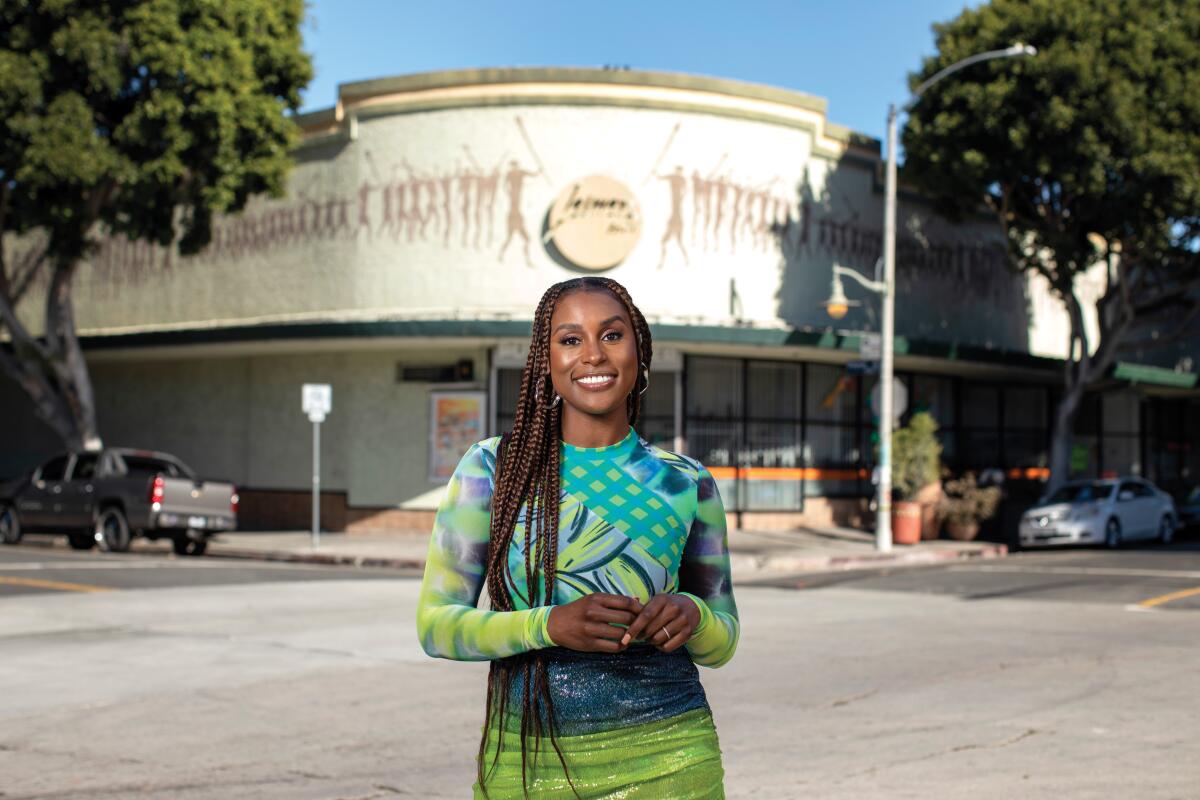
Without a doubt, this team of creatives appreciates the importance of growing where they’re planted in life and never forgetting their roots.
“To me, growing up there felt kind of aspirational,” Rae said. “We have really, for sure, glamorized parts of L.A. We have Blackened parts of L.A that I wish were a bit Blacker. The reality is, like we’ve mentioned on the show, that so much of it is changing, and it’s hard to find spots just for us that are in our neighborhood community. I think Issa Dee’s mission is similar to a lot of our missions. It’s just to find a safe space for us, where we live, where we can congregate.”
More to Read
The complete guide to home viewing
Get Screen Gab for everything about the TV shows and streaming movies everyone’s talking about.
You may occasionally receive promotional content from the Los Angeles Times.
